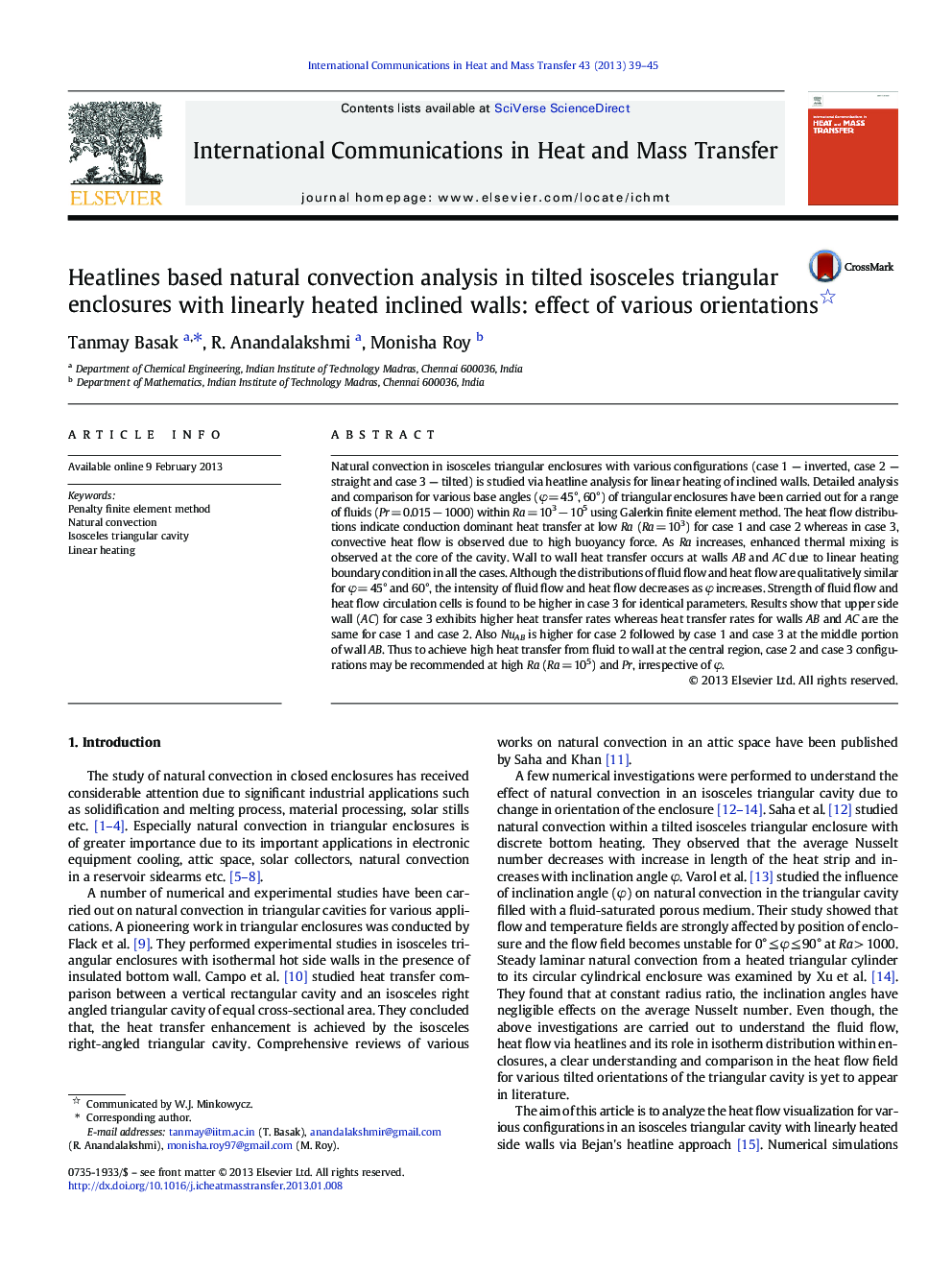| Article ID | Journal | Published Year | Pages | File Type |
|---|---|---|---|---|
| 653452 | International Communications in Heat and Mass Transfer | 2013 | 7 Pages |
Abstract
Natural convection in isosceles triangular enclosures with various configurations (case 1 - inverted, case 2 - straight and case 3 - tilted) is studied via heatline analysis for linear heating of inclined walls. Detailed analysis and comparison for various base angles (Ï = 45°, 60°) of triangular enclosures have been carried out for a range of fluids (Pr = 0.015 â 1000) within Ra = 103 â 105 using Galerkin finite element method. The heat flow distributions indicate conduction dominant heat transfer at low Ra (Ra = 103) for case 1 and case 2 whereas in case 3, convective heat flow is observed due to high buoyancy force. As Ra increases, enhanced thermal mixing is observed at the core of the cavity. Wall to wall heat transfer occurs at walls AB and AC due to linear heating boundary condition in all the cases. Although the distributions of fluid flow and heat flow are qualitatively similar for Ï = 45° and 60°, the intensity of fluid flow and heat flow decreases as Ï increases. Strength of fluid flow and heat flow circulation cells is found to be higher in case 3 for identical parameters. Results show that upper side wall (AC) for case 3 exhibits higher heat transfer rates whereas heat transfer rates for walls AB and AC are the same for case 1 and case 2. Also NuAB is higher for case 2 followed by case 1 and case 3 at the middle portion of wall AB. Thus to achieve high heat transfer from fluid to wall at the central region, case 2 and case 3 configurations may be recommended at high Ra (Ra = 105) and Pr, irrespective of Ï.
Related Topics
Physical Sciences and Engineering
Chemical Engineering
Fluid Flow and Transfer Processes
Authors
Tanmay Basak, R. Anandalakshmi, Monisha Roy,
